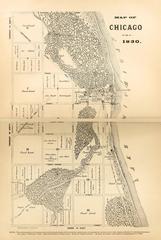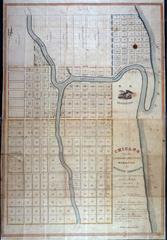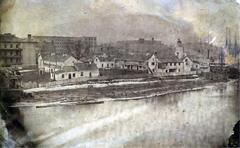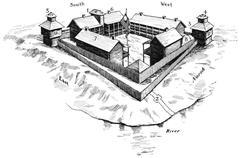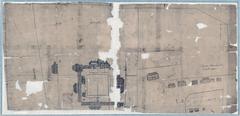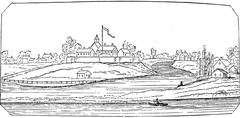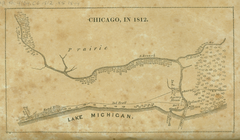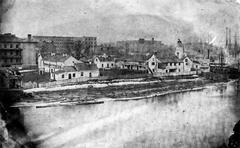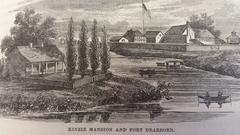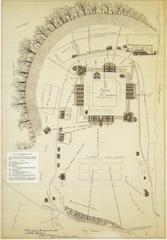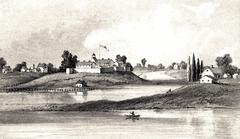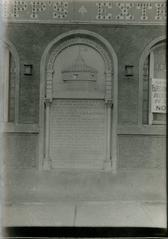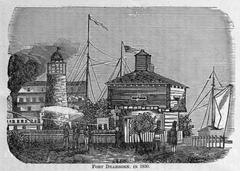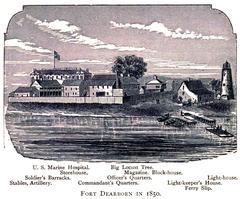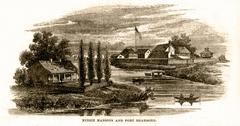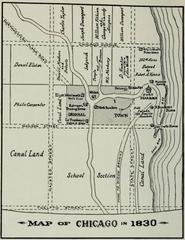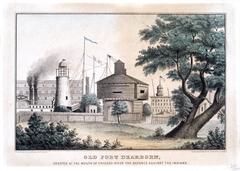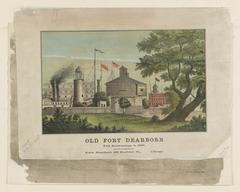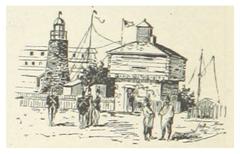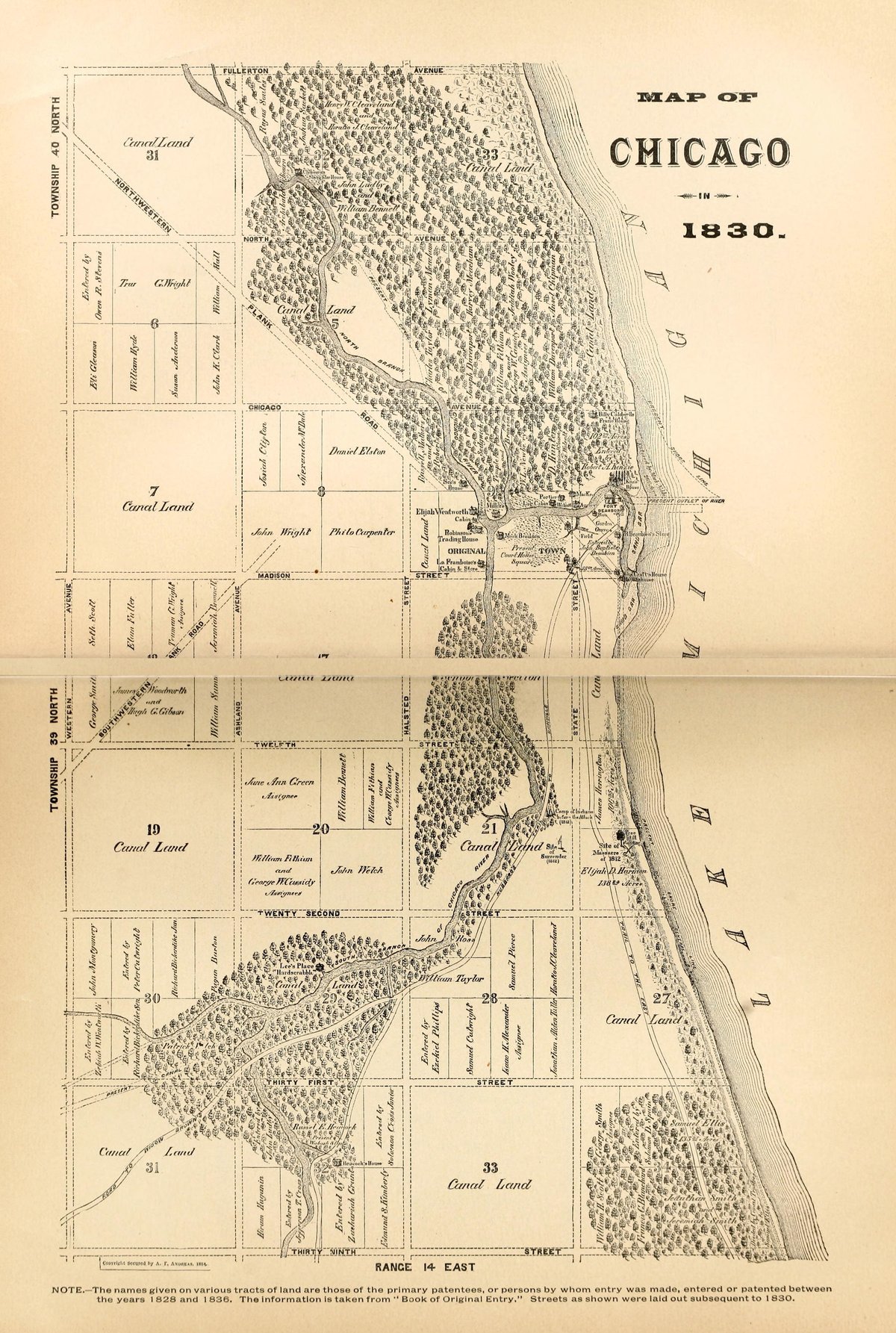
Fort Dearborn Visiting Hours, Tickets, and Guide to Chicago Historical Sites
Date: 14/06/2025
Introduction to Fort Dearborn and Its Significance in Chicago History
Fort Dearborn serves as a cornerstone of Chicago’s early history. Established in 1803 at the mouth of the Chicago River, its construction marked a turning point in the region’s development, influencing patterns of settlement, trade, and military strategy. The fort was named after Henry Dearborn, Secretary of War under President Thomas Jefferson, and its presence signaled the beginning of permanent non-Native settlement in the area (mexicohistorico.com, American Battlefield Trust, waynethomasyorke.com).
The fort’s construction profoundly affected local Indigenous communities, including the Potawatomi, Odawa, and Miami nations, whose ancestral lands were altered and contested by U.S. expansion (Indigenous Chicago Map). The 1812 Battle of Fort Dearborn, historically referred to as the “Fort Dearborn Massacre,” has been reinterpreted by modern historians as a nuanced conflict reflecting resistance and survival amidst the War of 1812 (chicagomag.com, Chicago Monuments Project).
Today, the legacy of Fort Dearborn is preserved through pavement outlines, commemorative plaques, and public art in Chicago’s Michigan–Wacker Historic District, allowing visitors to connect with this pivotal chapter of the city’s story (Chicago Landmarks, PlayEatLas). This guide provides essential information on visiting hours, ticketing, accessibility, nearby attractions, and travel tips to help you explore Fort Dearborn and its enduring impact (chicagohistory.org, Audiala).
Table of Contents
- Introduction
- Historical Overview
- Visiting Fort Dearborn Today
- Frequently Asked Questions (FAQ)
- Conclusion and Call to Action
Historical Overview
Establishment and Early Years
Built in 1803, Fort Dearborn was situated at a strategic point on the Chicago River, controlling a crucial link between the Great Lakes and the interior. The initial fortification, constructed of wood, housed about 50 soldiers, families, and civilians, asserting U.S. presence in a region dominated by Indigenous nations (mexicohistorico.com).
Relations with Native American Communities
Fort Dearborn’s establishment disrupted traditional land use, prompting complex negotiations and, at times, conflict with the Potawatomi, Miami, and Ottawa. The U.S. government used the fort to enforce treaties and control trade, often at the expense of Indigenous sovereignty (Indigenous Chicago Map).
The War of 1812 and the Fort Dearborn Incident
The fort’s most dramatic episode came during the War of 1812. On August 15, 1812, as the garrison evacuated under orders, the group was ambushed by Potawatomi warriors two miles south of the fort. More than 60 people were killed, and survivors were taken captive. The event, once called the “Fort Dearborn Massacre,” is now more accurately described as the “Battle of Fort Dearborn” to acknowledge the broader context and Indigenous perspectives (chicagomag.com, Chicago Monuments Project).
Visiting Fort Dearborn Today
Location and Access
The historic site is at Michigan Avenue and Wacker Drive in downtown Chicago’s Loop. While the original fort is gone, its outline is embedded in the pavement, and interpretive plaques mark the area (Chicago Landmarks).
Visiting Hours
Fort Dearborn’s markers and commemorative areas are part of the public streetscape and accessible 24 hours a day, seven days a week. For the best experience, visit during daylight when markers and plaques are visible.
Admission and Tickets
No ticket or admission fee is required to visit the Fort Dearborn site. It is open to all, year-round. Surrounding museums or guided tours that include Fort Dearborn may charge separate fees.
Guided Tours and Special Events
While there are no regular tours solely dedicated to Fort Dearborn, many walking tours of downtown Chicago and the Riverwalk include the site and its history. Special events, such as commemorations on Memorial Day or Veterans Day, sometimes highlight the fort’s role in Chicago’s past (Choose Chicago).
Accessibility
The area is fully accessible, with curb cuts, crosswalks, and paved sidewalks suitable for visitors with mobility needs. The Battle of Fort Dearborn Park, located at 18th Street and Calumet Avenue, is also wheelchair accessible and open daily from dawn to dusk (Snoflo.org).
Nearby Attractions
- DuSable Bridge: Historic bridge with public art and views of the Chicago River.
- Chicago Riverwalk: Scenic pedestrian route lined with cafes and historic markers.
- Chicago History Museum: Exhibits on Fort Dearborn and early Chicago (chicagohistory.org).
- Michigan-Whacker Historic District: Architectural gems and a vibrant urban atmosphere.
- Navy Pier and Millennium Park: Major cultural and recreational destinations nearby.
Photography Tips
Capture the fort’s outline, plaques, and surrounding skyline at morning or late afternoon for ideal lighting. Include public art, such as the “Defense” sculpture, for compelling visual narratives.
Indigenous Perspectives and Evolving Narratives
The Fort Dearborn site is a place of deep Indigenous significance. The Potawatomi, Ojibwe, and Odawa (Neshnabé) nations have ancestral ties to this land. The fort’s creation after the 1795 Treaty of Greenville—signed without local Native representatives—remains a point of contention and ongoing dialogue (Indigenous Chicago Map). Today, the City of Chicago consults with tribal nations to ensure more inclusive and accurate historical representation (City of Chicago History).
Commemoration and Public Memory
Fort Dearborn’s legacy is enshrined in Chicago’s civic symbols, including the first star on the city flag (Architecture.org). The “Defense” sculpture on the DuSable Bridge and various plaques invite reflection and dialogue about public memory, historical representation, and reconciliation (Chicago Monuments Project, Snoflo.org).
Practical Travel Tips
- Getting There: Use CTA buses or the State/Lake ‘L’ station. Parking is limited; public transit is recommended.
- Accessibility: Sidewalks and parks are wheelchair accessible.
- Best Times to Visit: Daylight hours for optimal viewing and safety.
- Respectful Tourism: Recognize the site’s Indigenous significance. Engage with multiple narratives and reflect at monuments and plaques.
Frequently Asked Questions (FAQ)
Q: What are Fort Dearborn’s visiting hours?
A: The site is open 24/7. Daylight hours are best for viewing plaques and markers.
Q: Is there an admission fee or ticket required?
A: No, the site is free and does not require tickets.
Q: Are guided tours available?
A: Many city walking tours and river cruises include Fort Dearborn in their routes.
Q: Is the site accessible for visitors with disabilities?
A: Yes, the area and Battle of Fort Dearborn Park are wheelchair accessible.
Conclusion and Call to Action
Fort Dearborn is a window into Chicago’s layered history—a place where the stories of frontier expansion, Indigenous resistance, and urban transformation converge. Visiting the site offers not only historical insight but also a chance to reflect on the city’s ongoing evolution and commitment to more inclusive commemoration.
Enhance your visit by downloading the Audiala app for self-guided tours, historical context, and exclusive content on Chicago’s heritage (Audiala). Continue your exploration at nearby museums and cultural sites, and engage with the city’s vibrant storytelling through public art and interpretive plaques.
Whether you are a history enthusiast, a resident, or a first-time visitor, Fort Dearborn is an essential stop on your journey through Chicago’s past and present. Plan your visit today and connect with the living history at the heart of the city.
References
- The Historical Role of Fort Dearborn in Illinois Defense – mexicohistorico.com
- Fort Dearborn – American Battlefield Trust
- Fort Dearborn Chicago Landmark Details
- Indigenous Chicago Map – Fort Dearborn
- The True Story of the Deadly Encounter at Fort Dearborn – Chicago Magazine
- Chicago Monuments Project: Fort Dearborn Massacre
- Audiala App – Guided Tours and More
- Architecture.org: Fort Dearborn
- Snoflo.org: Battle of Fort Dearborn Park
- City of Chicago History
- PlayEatLas: Chicago’s War Memorials
- Waymarking.com: Site of Fort Dearborn Markers
- Chicago History Museum
